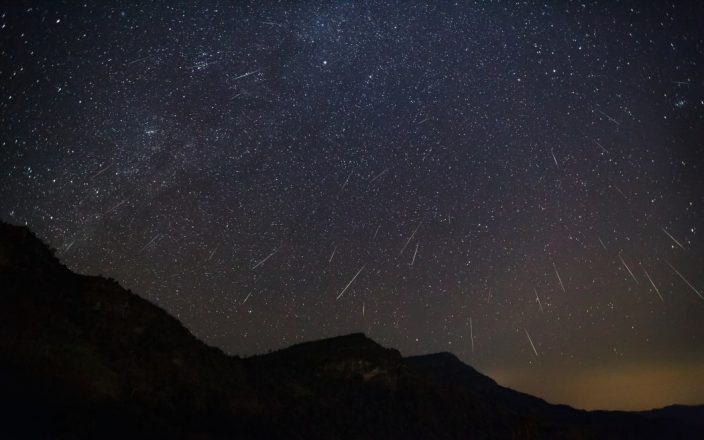밤새 천상의 불꽃 놀이를 제공하기 위해 세 개의 유성우가 결합되어 예상됩니다.
오타고 박물관 감독이자 천문학자 이안 그리핀 (Ian Griffin) 은 오늘 밤 쇼가
“이 소나기는 지난 10년 이상 천문학자들에 의해 관찰되었습니다.일년 중 이맘때 정기적으로 나타나며 올해는 거의 완벽한 조건입니다. 오늘 달이 새롭고 하늘이 정말 어둡다는 것을 의미하기 때문입니다.”
그는 Morning Report에 조명에서 멀리 떨어진 자리가있는 사람이라면 누구나 쇼를 즐길 수 있다고 말했다.
그는 밤 중 언제든지 좋았지 만 “자정 이후에는 유성이 더 쉬워지고 밝아 질 것”이라고 말했다.
“하늘이 맑고 구름이 없다면 그 사이를 볼 수 있습니다… 시간당 20 개의 유성이 될 수 있고 아마도 몇 개 더 많을 수 있습니다.일부는 빠르게 움직이고 일부는 느리고 밝습니다.
“따라서 한 시간 정도 앉으면 꽤 많은 것을 볼 수 있으며 흥미로운 디스플레이가 될 것입니다.”
그는 지구가 태양 궤도를 돌면서 오래된 혜성의 길을 건넜다고 설명했습니다.
“그리고 혜성이 태양 주위를 돌아 다니면서 물질이 폭발하여 그 뒤에 흔적처럼 남습니다.그리고 일년 중 이맘때 지구는 세 개의 다른 혜성으로 구성된 세 개의 산책로를 지나가고 있습니다. 그 길은 약간의 먼지로 가득 차 있습니다.
“하늘에서 유성이나 슈팅 스타를 볼 때 지구 대기에서 높이 타는 것은 작은 혜성 먼지입니다.그리고 그들은 정말 빠르게 움직이고 있기 때문에 불타 버립니다.그들 중 일부는 초당 20km의 빠르며 대기를 통과 할 때 대기의 원자에 부딪혀 빛을 발하고 소산됩니다.
“주말 동안 하늘에서 슈팅 스타를 보면 수년 전에 지구 궤도를 가로 지르는 죽어가는 혜성 불씨를 볼 수 있습니다.”
그는 망원경이 없는 사람들도 쉽게 볼 수 있다고 말했습니다.
출처: RNZ 뉴스






























































